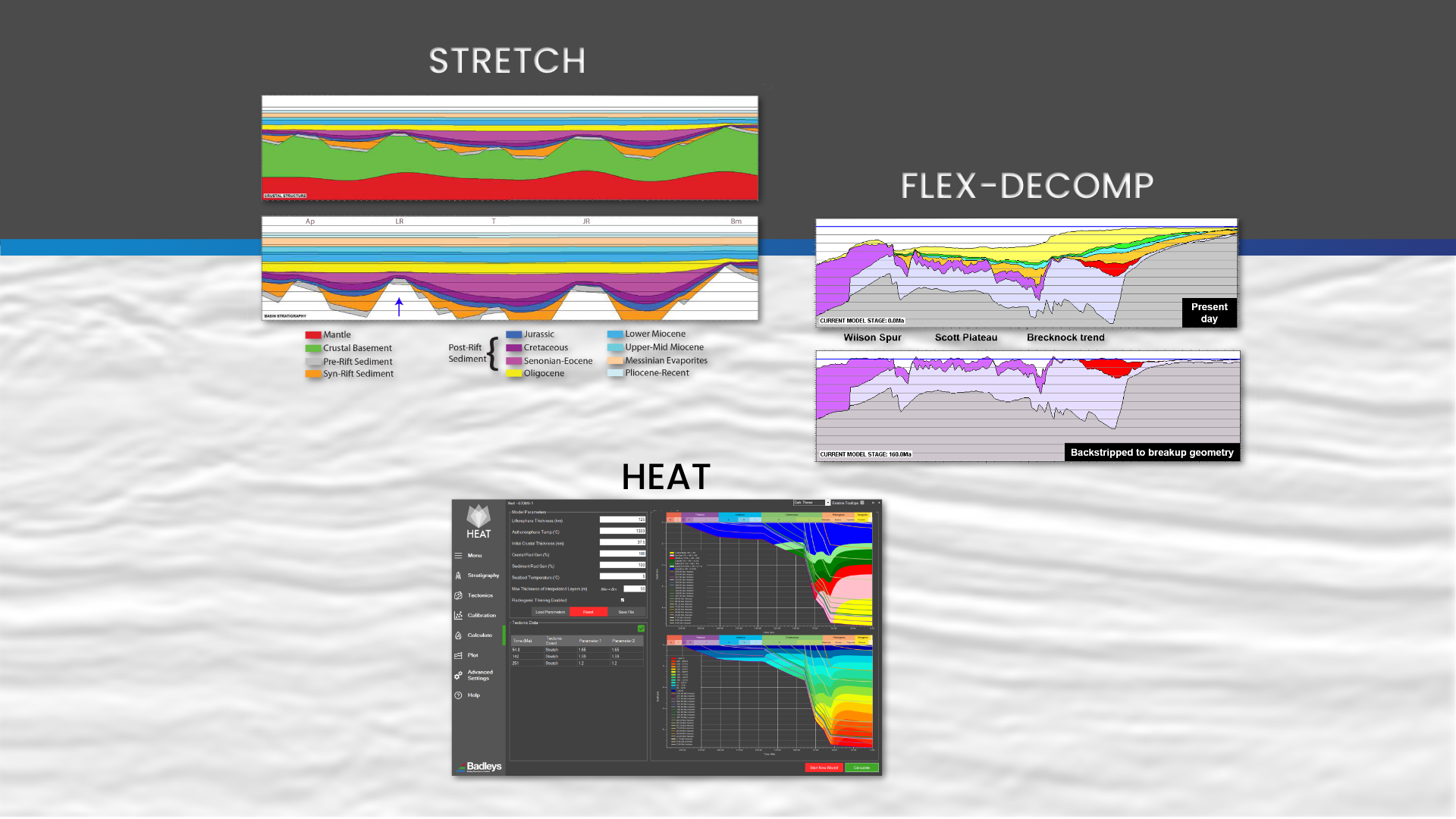Precision Software & Services for the Energy Industry
FLEX-DECOMP
FLEX-DECOMP is an advanced reverse-modelling tool that reconstructs geological history by backstripping present-day 2D cross-sections of basins or margins. It progressively removes and decompacts stratigraphy, incorporating whole-lithosphere temperature calculations and 2D flexural-isostasy. Fast and easy to use, FLEX-DECOMP provides valuable insights into basin evolution and subsurface dynamics.
Key Features

Since 1990 we have been working with Prof. Nick Kusznir (Liverpool University) on understanding and modelling the processes of continental extension. Together we have developed techniques and a suite of software products (STRETCH, FLEX-DECOMP and HEAT) for the large-scale analysis of rift basins and continental margins. In a commercial context these are used mainly to assist frontier exploration projects.
Post-rift backstripping with FLEX-DECOMP produces a sequence, back through time, of balanced palinspastic restorations, with the final restoration being the syn-rift/syn-breakup geometry of the basin or margin. If required, backstripping can proceed further back in time through the syn-rift and pre-rift history, revealing quantitative information about the complete subsidence history of the basin.

Model Basin Histories
Model the subsidence history and stratigraphic development of rift basins and continental
margins by producing a sequence of restored cross-sections through the full stratigraphy.
Predict Palaeobathymetry and
Palaeotopography
Incorporating isostasy and quantified thermal subsidence into the calculations produces
geologically-complete restorations which can be used to predict palaeobathymetry and
palaeotopography through time. This allows sediment source areas and sediment depocentres to be
identified, as input to future GDE modelling.
Constrain Basin Extension and
Beta-Factor
A valid restoration sequence will be underpinned by an input profile of
beta-(stretching)-factor, constraining the modelled thermal subsidence history. This allows
constraints from subsidence history to be used to estimate the distribution of beta-factor
across the basin or margin. These results can be carried forward as input to further thermal
modelling of the basin (HEAT).

Interpretation
QC
Isostatically-balanced cross-sections can help to validate and QC seismic
interpretation, by highlighting structural features that are admissible and also those that
aren't. Stretch models also help you to understand the geodynamic processes which have impacted
the development of your basin, thus reducing exploration uncertainty.
2D and 3D Backstripping
Available from Badleys
FLEX-DECOMP in 2D is available for purchase. A 3D version, working with maps and grids, also
exists but is used exclusively for Badleys' consultancy projects rather than being available
externally. Please contact us for details of these services.